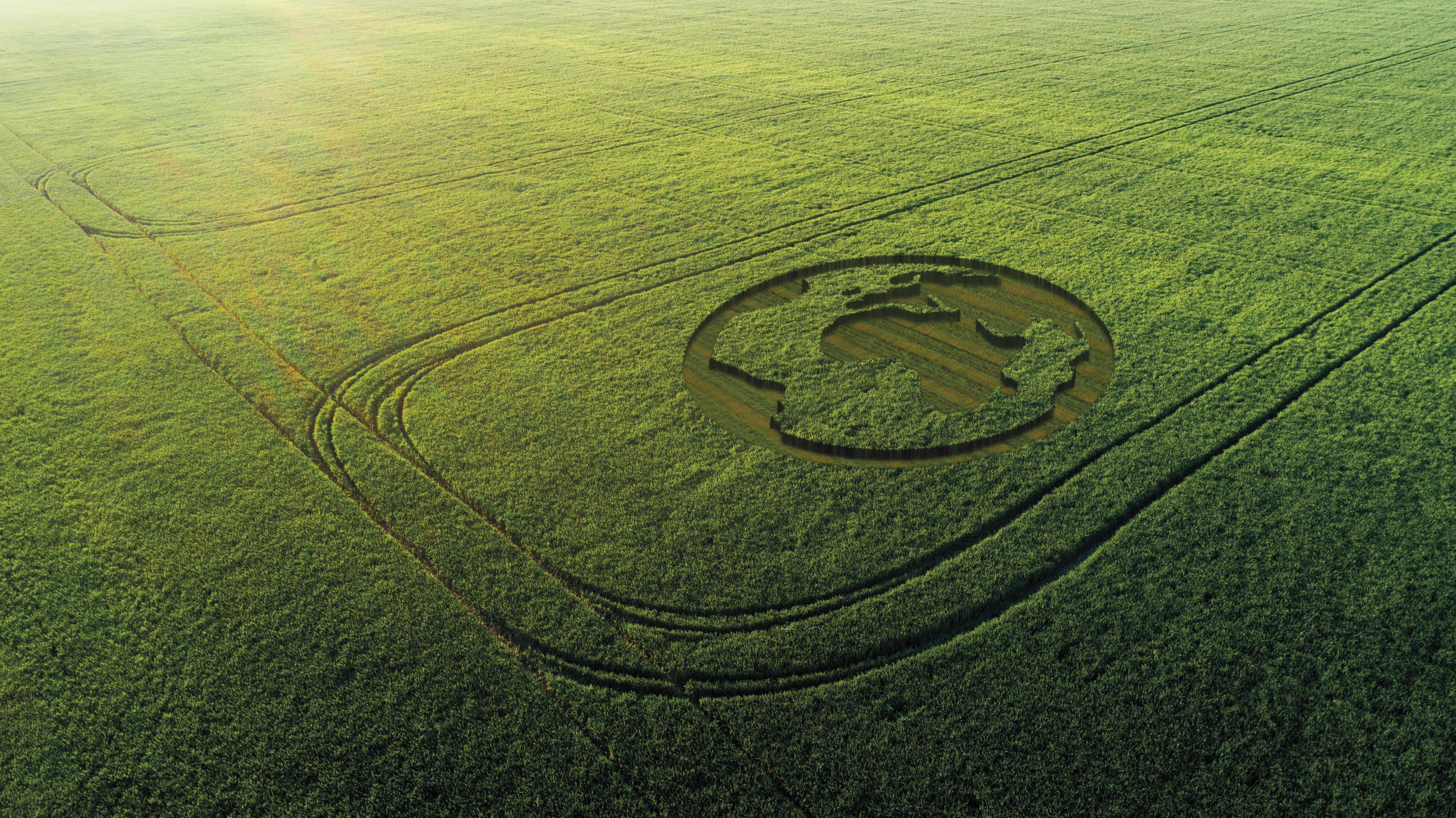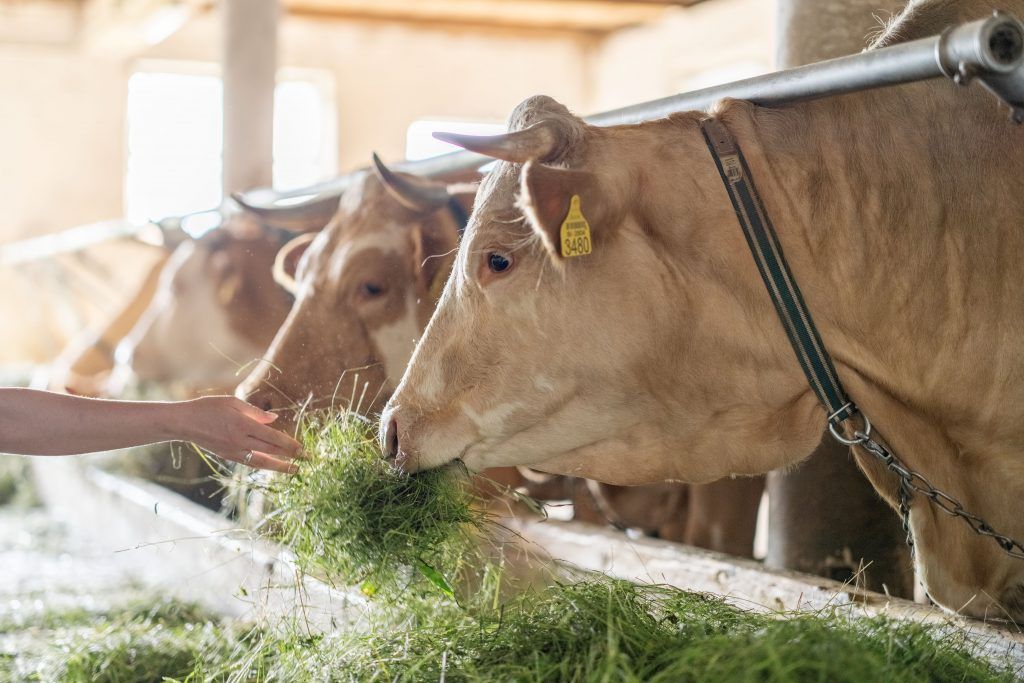One of the interesting questions is when to mow, in the morning or in the afternoon? There is no clear answer to this question, as both otpions have their advantages and disadvantages.
The question is related to the physiology of plants and the content of water-soluble carbohydrates (WSCs), i.e. sugars. Photosynthesis depends on solar radiation and the sugars are formed most intensely during the brightest part of the day. At night, however, only respiration takes place in plants and the sugars formed in the process of photosynthesis are consumed. So, in the morning the sugar content in plants is the lowest.
When mowing in the morning the plants are exposed to a longer period of solar radiation. This enables stomata to stay widely open enabeling faster moisture loss and wilting. As a result, harvesting time is shortened and the risk of bad weather is lower. It is recommended to mow after the morning fog and after the dough rises, because the evaporation of surface moisture is much faster if the plants are standing upright. In favorable weather conditions, if the forage is mowed in the morning, the silage can be made on the same day. When making hay, mowing in the morning shortens the drying time, as the forage is exposed to sunlight for a longer period. In the case of wetter periods, mowing in the morning is more recommended due to faster wilting, while in very dry and hot weather, in case of ensiling, mowing later in the day is more recommended, to prevent the forage from overdrying.
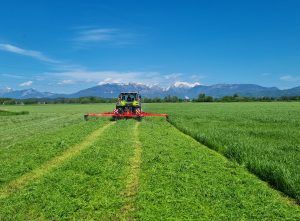
The longer duration and intense solar radiation enable the faster loss of moisture from plants and faster wilting.
The concept of afternoon mowing is based on the fact that sugars in plants are most intensively formed during the brightest part of the day and reach the highest concentration in the late afternoon. In alfalfa, there is also the highest ratio between leaves and stems in the late afternoon. The higher sugar content in the forage is important both from the energy point of view and the animal consumption. Because sugars are tasty the forage is more palatable. Sugars are also very important for the ensiling process because higher sugar content provides more substrates for lactic acid bacteria. In the fermentation process, these bacteria convert sugars into lactic acid, thus quickly lowering the pH and ensure good stability of the forage.
The downside of mowing in the afternoon is that it may take longer to wilt or dry the forage. If the moisture loss from the plants is not fast enough, the process of respiration through the stomata is prolonged and the loss of nutrients is higher. If the wilting or drying of forage continues into the night, this means that harvesting can last even a day or two longer, compared to morning mowing. If the humidity and the temperature at night are high, the respiration of the plants is more intensive, and more nutrients are lost than would be gained by later mowing. Longer drying time is also a risk factor in case of a bad weather forecast. When the weather is cold and cloudy, the content of WSCs does not change significantly during the day and in this case, it is crucial to harvest the forage as soon as possible.
However, if the drying conditions are good, and the forage can be wilted to 60% moisture by the evening, the higher sugar content can be achieved. Mowing later or in the afternoon is also recommended in the severe summer heat, or in the areas with intense solar radiation and low humidity. Afternoon mowing is recommended in dry areas, especially for alfalfa, where the leaves can dry out very quickly, and the losses due to the leaves crushing at raking and baling increase.
.
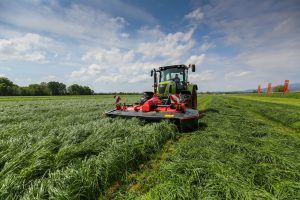
Sugars formed in plants during the brightest part of the day, reach their highest concentration in the late afternoon.
Research has shown that cows and horses prefer to choose hay mowed in the afternoon than the hay mowed in the morning. This relates to the content of sugars which improve the taste and the smell and thus increase consumption. Due to the higher content of WSC, mowing in the afternoon is also recommended in the case of Zero grazing.
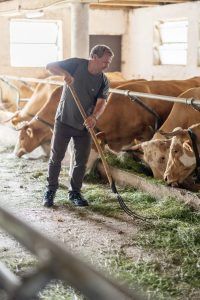
Higher VSCs content or sugars in hay improves the taste and smell and increases the consumption in animals.
Keywords: sip, agriculture, agricultural machinery, agricultural machines, agricultural equipment, grassland harvesting, making hay, meadow, mowing, diary cows, beef cattle, horses, forage, disc mowers, finger conditioner, roller conditioner, tedder, rake, pick-up rake…









